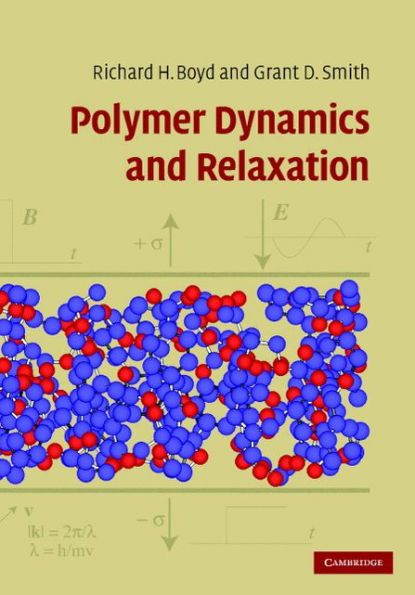Polymers exhibit a range of physical characteristics, from rubber-like elasticity to the glassy state. These particular properties are controlled at the molecular level by the mobility of the structural constituents. Remarkable changes in mobility can be witnessed with temperature, over narrow, well defined regions, termed relaxation processes. This is an important, unique phenomenon controlling polymer transition behaviour and is described here at an introductory level. The important types of relaxation processes from amorphous to crystalline polymers and polymeric miscible blends are covered, in conjunction with the broad spectrum of experimental methods used to study them. In-depth discussion of molecular level interpretation, including atomistic level computer simulations and applications to molecular mechanism elucidation, are discussed. The result is a self-contained approach to polymeric interpretation suitable for researchers in materials science, physics and chemistry interested in the relaxation processes of polymeric systems.
1100943314
Polymer Dynamics and Relaxation
Polymers exhibit a range of physical characteristics, from rubber-like elasticity to the glassy state. These particular properties are controlled at the molecular level by the mobility of the structural constituents. Remarkable changes in mobility can be witnessed with temperature, over narrow, well defined regions, termed relaxation processes. This is an important, unique phenomenon controlling polymer transition behaviour and is described here at an introductory level. The important types of relaxation processes from amorphous to crystalline polymers and polymeric miscible blends are covered, in conjunction with the broad spectrum of experimental methods used to study them. In-depth discussion of molecular level interpretation, including atomistic level computer simulations and applications to molecular mechanism elucidation, are discussed. The result is a self-contained approach to polymeric interpretation suitable for researchers in materials science, physics and chemistry interested in the relaxation processes of polymeric systems.
41.99
In Stock
5
1

Polymer Dynamics and Relaxation

Polymer Dynamics and Relaxation
eBook
$41.99
$55.99
Save 25%
Current price is $41.99, Original price is $55.99. You Save 25%.
Related collections and offers
41.99
In Stock

Product Details
| ISBN-13: | 9781139809795 |
|---|---|
| Publisher: | Cambridge University Press |
| Publication date: | 09/13/2007 |
| Sold by: | Barnes & Noble |
| Format: | eBook |
| File size: | 16 MB |
| Note: | This product may take a few minutes to download. |
From the B&N Reads Blog
